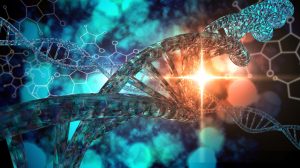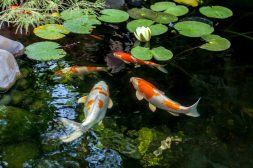Definition
noun, plural: tropocollagens
A single collagen molecule; a molecular structure that makes up a collagen fiber, and is comprised of three polypeptide chains coiled around each other
Supplement
Tropocollagen is the structural unit of a collagen fiber. It is made up of three polypeptide strands (referred to as alpha peptides) that are twisted together into a super helix or a right-handed triple helix. The amino acids in each chain are arranged in a regular pattern. The typical pattern is Gly-Pro-X or Gly-X-Hyp (the X being any other amino acid residue). An aggregate of tropocollagen is referred to as a fibril.
The synthesis of tropocollagen begins at mRNA transcription of genes that usually have the “COL” prefix. The final mRNA transcript leaves the nucleus and then binds with the ribosomes to begin translation, resulting in the formation of pre-pro-peptide. The pre-pro-peptide moves to the endoplasmic reticulum for post-translational modification. The first modification is the dissolution of the signal peptide on the N-terminal of the pre-pro-peptide, thereby, becoming a propeptide. The propeptide next undergoes lysine and proline hydroxylations through the action of vitamin C (as a cofactor) and enzymes, prolyl hydroxylase and lysyl hydroxylase. This is, then, followed by glycosylation where monosaccharide (glucose or galactose) monomers are added onto the hydroxyl groups of lysines. This leads to the formation of a triple helix structure, now called procollagen, but still with unwound or loose ends. The procollagen is packaged into a transfer vesicle to be transferred to the Golgi apparatus for further post-translational modification. In the Golgi apparatus, oligosaccharides are added to the procollagen and then packaged into a secretory vesicle to be transferred outside the cell. Once outside, the collagen peptidases “trim” the loose ends of the procollagen to become tropocollagen. The enzyme lysyl oxidase aid in the binding of tropocollagen molecules to form an aggregate called collagen fibril.
See also:
Dictionary > Tropocollagen
You will also like...

Population Growth and Survivorship
This lesson looks at population attributes, regulation, and growth. It also covers population genetics, particularly gen..

Water in Plants
The movement of molecules (specifically, water and solutes) is vital to the understanding of plant processes. This tuto..

The Origins of Life
This tutorial digs into the past to investigate the origins of life. The section is split into geological periods in the..

New Zealand’s Biodiversity
Find out more about New Zealand's unique biodiversity by exploring a range of different ecosystems and the key role of s..

Evolution of Life – Ancient Earth
Autotrophs flourished, absorbing carbon and light. Soon after, primitive life forms that could assimilate oxygen thrived..

Freshwater Communities & Lentic Waters
Lentic or still water communities can vary greatly in appearance -- from a small temporary puddle to a large lake. The s..

